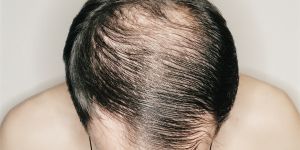 The prevalence of the age-old phenomenon of androgenic alopecia has attracted abundant recognition to the issue. It is understood thus far that the condition is inherited from both parents. However, there is not much information on the molecular activity that results in the premature dormancy of follicular units. A few findings have been obtained, but no solid conclusion has been yet achieved through the various studies. Most research results do address activities in the cell in androgenic alopecia, but like a jigsaw puzzle some pieces are missing and the picture is not yet complete.
The prevalence of the age-old phenomenon of androgenic alopecia has attracted abundant recognition to the issue. It is understood thus far that the condition is inherited from both parents. However, there is not much information on the molecular activity that results in the premature dormancy of follicular units. A few findings have been obtained, but no solid conclusion has been yet achieved through the various studies. Most research results do address activities in the cell in androgenic alopecia, but like a jigsaw puzzle some pieces are missing and the picture is not yet complete.
Molecular mechanism of androgenic alopecia
Prior to beginning our discussion of the molecular mechanism of androgenic alopecia, let’s learn the protagonists of this story.
1- DHT (dihydrotestosterone): a stronger version of the androgen testosterone
2- 5-alpha-reductase: the enzyme that catalyzes the conversion of testosterone to the its stronger version that is DHT. [1]
The focus of the following study is around androgen-sensitivity and androgen-insensitivity in follicular units as the cause of the notorious pattern of hair loss. The distinct pattern of hair loss in androgenic alopecia, or in other words, why the follicular units in the crown and hairline are susceptible to hair loss as opposed to follicular units on the back of the scalp; is where the confusion is bred.
The mechanism of how specific follicular units are androgen resistant while others are susceptible to dormancy is not fully known. All that is known is that the susceptibility and resistance are inherited characteristics. According to studies, DHT notably binds to androgen-responsive follicular units found mostly in the crown and hairline as they tend to have higher numbers of DHT receptors [2]. It was also found that the 5-alpha-reductase activity is increased in balding scalp [2].
The binding of DHT to androgen-sensitive follicular units triggers a cascade of signals within the cells that ultimately activate the genes responsible for the miniaturization of follicular units.
While it is found that DHT is responsible for the dormancy of androgen-sensitive follicular units [3, how it has contradicting effects on tissues depending on their body site remains unknown. Although DHT terminates hair growth in the scalp, it stimulates it on the body [4].
Reversing androgenic alopecia with hair transplants
Alternative methods of hair restoration exist; however, those treatments require daily use whereas hair transplants are a one-time procedure. Hair transplants are micro-surgery that extracts androgen resistant follicular units from areas of hair growth and relocates them to areas of hair loss. Upon relocation, follicular units do not lose their androgen insensitive properties and continue to initiate growth in target areas.
There are two primary methods of graft extraction in hair transplants: FUE and FUT. FUT or follicular unit transplantation is the first technique of hair transplants and the most inconvenient. Follicular units are harvested by first excising a region of the scalp and later dissecting it. The nature of the extraction process in FUT leaves a linear scar and nerve damage in the area that could either be permanent or temporary [5] [6]. To know more about hair transplants, book an online consultation with Vera Clinic.
FUE, on the other hand, individually extracts follicular units by utilizing a micro-punch to isolate them and later extract them with forceps. The harvesting process in FUE is more immaculate, leaves minuscule scars, and most importantly does not cause nerve damage [5] [7].
For either FUE or FUT to be effective, patients have to have sufficient donor regions that could potentially cover balding scalp. Although the difference in androgen sensitivity between follicular units on the crown and the back of the scalp has challenged scientists, it has also paved the way for hair transplants to be effective. Female pattern hair loss, on the other hand, cannot be reversed with hair transplants as the hair loss is more diffuse. In other words, it is difficult to locate stable donor regions as opposed to male pattern hair loss.
Shift Frequency © 2019 – Educational material
